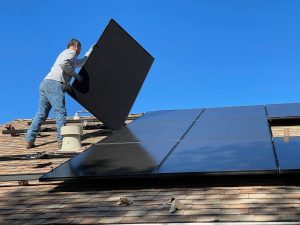Solar Tax Credit 2023: Understanding the Federal Tax Credit
 In 2022, the Federal Government offers compensation for installing solar panels in your home, potentially providing a significant tax break when filing your tax returns this year. The solar tax credit, offered by the U.S. Government, can cover up to 30% of the cost of installing a solar-powered system in your home.
In 2022, the Federal Government offers compensation for installing solar panels in your home, potentially providing a significant tax break when filing your tax returns this year. The solar tax credit, offered by the U.S. Government, can cover up to 30% of the cost of installing a solar-powered system in your home.
What is the Federal Solar Tax Credit?
The Internal Revenue Service (IRS) defines the federal solar tax credit as an investment tax credit (ITC). This incentive aims to encourage investment in products and services that the government supports. In 2022, President Joe Biden signed the Inflation Reduction Act, extending solar tax credits through 2034 as part of the U.S. Government’s efforts to reduce the global carbon footprint.
The tax credit, officially known as the residential clean energy credit, isn’t limited to solar power. It can cover expenses like equipment and installation but doesn’t apply to structural work supporting panels. In some cases, the solar tax credit can be combined with state incentives and utility-funded programs promoting clean energy.
How Does the Solar Tax Credit Function?
The solar tax credit amount depends on the total expenditure on a completed project. It applies to homeowners who install a qualifying system between 2017 and 2034. For 2022, the IRS states that the solar tax credit is 30% for taxpayers filing in 2023. With this credit, savings on an average solar installation can reach $7,500. The 30% rate remains in effect until 2032, decreasing twice in the subsequent two years, eventually reaching 22%. It’s important to note that the solar tax credit doesn’t provide cash back but significantly reduces energy expenses.
Let’s find your way to tax and accounting peace of mind
Let us be part of your journey towards success.